New Havyard Ship Technology Changes Its Name Back to Havyard Leirvik
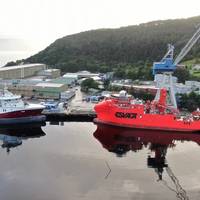
New Havyard Ship Technology AS is changing its name to Havyard Leirvik AS following the recent restructuring of the yard’s activities and changes to company strategy.Part of the Havyard Group, Havyard Leirvik installs marine emissions reduction technology as well as other repair and modification services.CEO Karsten Sævik explains that the yard, which in 2018 celebrated its 100th anniversary, was formerly also named Havyard Leirvik. "The yard is well known as Havyard, so it was natural to change the name back to Havyard Leirvik…
Labor Spat at Vancouver Ends as Deal Reached
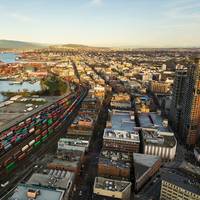
Longshore workers at Canada's biggest port, the Port of Vancouver, were locked out on Thursday in a labor dispute over technology changes, temporarily grinding most shipping there to a halt. The lockout ended in a deal on Thursday with their employer after a few hours, the workers' union said.A tentative agreement on a new contract was reached with the BC Maritime Employers Association, the International Longshore and Warehouse Union Canada said in a statement. Jim Thompson, a spokesman for the International Longshore and Warehouse Union Canada…
Oi: Tracking 50 Years of Ocean Innovation
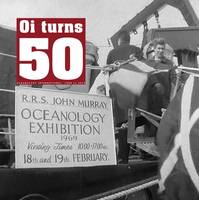
As Oceanology International celebrates its 50th Anniversary, Marine Technology Reporter explores half a century of subsea technology development and discovery. Oceanology International Americas runs February 25-27, 2019 in San Diego.When Oceanology launched in 1969 in the seaside resort of Brighton the world was a very different place. For a start, Brighton was home to the mods and rockers, who would square off against each other on the town’s elegant seafront. The British currency included shillings and ha’ pennies and man had yet to step foot on the moon.More crucially…
Navy of the Future: The Revolution & Evolution of Surface Combatants
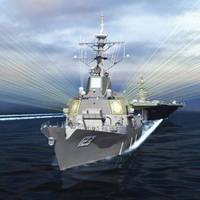
Following the drawdown at the end of the Cold War, the Navy finds itself trying to build up again. The expansion of Russian and Chinese naval power has changed the calculus. While there will always be a debate about the final number of ships to build, we can all agree on one thing: the Navy must get bigger and the demand signal is to start building now,” said Chief of Naval Operations Adm. John Richardson, in testimony before Congress regarding the sea service’s 2019 budget request.
Hyper Connectivity: The Risks and Rewards
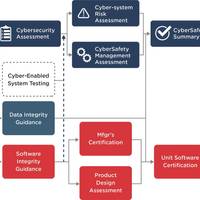
The maritime industry is becoming more connected – at sea, on land and in between. This trend has given rise to a cyber-enabled fleet that continues to adopt greater levels of automation and operational complexity. For the end user, the benefits of modern shipping are multiple. For the ship owner or operator, however, every incremental advance of technology creates new entry points for risk. In this hyper-connected era, defending against the introduction of new risks as technology changes demands a recommitment to systems engineering and…
ABS: Sharpening its Global View
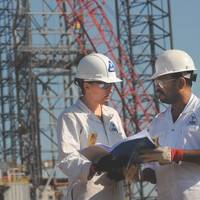
The American Bureau of Shipping (ABS), already one of the world’s well-regarded classification societies, recently restructured its ranks to meet the perpetually evolving needs of its customers. Kirsi Tikka, the global head of marine, and Howard Fireman, CTO, explain. While the business of ship classification is ever-evolving, it could be argued that today is a watershed of sorts in terms of this businesses evolution. Increasing amounts of data and data analytics are rapidly changing the operational profiles of ships at sea…
NZ's “Sound framework” for Managing Coastal Navigation
A review of coastal navigation safety by Maritime NZ has found that there is a sound framework in place to manage the movement of ships around the New Zealand coast, with procedures in place to assess risk and adjust safety measures if required. Maritime NZ Director Keith Manch said the review, begun in April last year, was prompted by an anticipated increase in the number of ship visits to New Zealand, a trend toward larger ships, and technology changes in navigational aids. Consideration was also give to a Transport Accident Investigation Commission (TAIC) recommendation following the grounding of the Rena that Maritime NZ collect data on shipping movements around the New Zealand coast, and monitor and control the use of virtual aids to navigation around the New Zealand coast.
Riders on the Storm
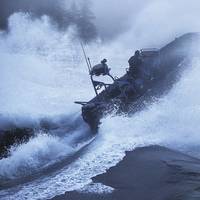
It’s no shock that decking, seating and other related equipment for ‘fast boats’ is a critical ingredient for maritime security personnel. A shock mitigation strategy is essential for all craft that undertake open sea transits or operate in rough water. The definition of shock mitigation is, ‘to make a violent collision or impact less intense.’ The search for shock mitigation has created a range of solutions. Before that, however, criminal organizations capable of buying fast boats were most likely running something, or someone, illegal in from offshore.
AMC Extends Simulator Contract with Kongsberg
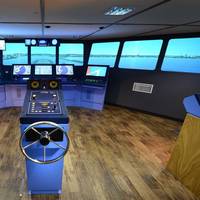
The Australian Maritime College (AMC) has opted to extend its Long Term Simulator Support Program (LTSSP) with Kongsberg Maritime for a further five years. The LTSSP ensures that all Kongsberg Maritime simulators installed at AMC’s sites in Launceston and Perth are up-to-date and operating optimally. Additionally, the LTSSP provides AMC the opportunity to upgrade to the new K-Sim Navigation technology platform. AMC is one of the largest maritime training organizations in the Southern Hemisphere and is highly regarded for its work in Dynamic Positioning…
Carnival to Update Entire Fleet's Internet Service
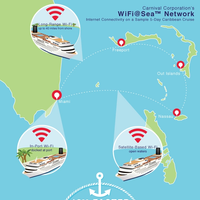
WiFi@Sea high-speed network will combine land-based systems and advanced satellite connectivity designed to give passengers faster, more stable and powerful internet service at sea. With connectivity speeds that can be roughly 10 times faster than ever before, passengers will be able to share their cruise experience via Internet, email and social media in real time. Carnival Corporation & plc has unveiled a hybrid wireless network – a high-speed service to eventually be rolled out to all 101 of its ships on all nine of its brands.
New Zealand to Review Coastal Navigation Safety
Maritime New Zealand (MNZ) announced it is undertaking a review of coastal navigation safety to identify risks and assess current and potential safety measures. MNZ Director Keith Manch said the review, which begins July 2014, is part of a focus on developing an intelligence-led, risk-focused approach to maritime safety. “In order to appropriately manage risks in the coastal environment we need an accurate and up-to-date picture of what those risks are,” he said. The first phase is expected to last around 12 months and will involve assessing the nature of risks around coastal navigation and how they are being managed. “We are taking an open-minded approach, so the first thing to do is establish what risks actually exist and what measures are in place to address them,” Manch said.
Corsica Ferries First with VAVE

Corsica Ferries is first to tap into MCPs new entertainment and information platform for the ferry and cruise industry. Following a successful pilot, five vessels in the Mediterranean Ocean will be equipped with Value Adding Voyage Experience platform (VAVE) this summer. MCP said passengers will enjoy rich digital leisure opportunities from an innovative onboard digital entertainment and information solution. Access to Internet and entertainment services from personal devices is not something crew and passengers on cruise ships and ferries have been spoiled with.
SECNAV Mabus Delivers Keynote at Jackson Christening
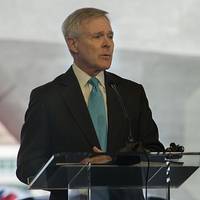
Secretary of the Navy Ray Mabus delivered the keynote address at the christening ceremony of the future USS Jackson (LCS 6) March 22 at Austal in Mobile, Ala. Dr. Katherine Holmes Cochran, daughter of Mississippi Sen. Thad Cochran, sponsors Jackson, the third Austal-constructed littoral combat ship to be christened. "Kate now becomes an honorary member of the Jackson's first crew," said Mabus. Mabus went on to discuss not only Cochran's role in the future of the ship, but Jackson's future as well. Jackson will be a key enabler of the U.S. Navy's ability to maintain a worldwide presence.
Suez Canal Authority Goes for Major Communications Upgrade
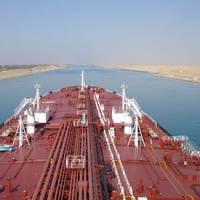
Provider of business collaboration and communication solutions, Avaya, says it has signed a major deal with Cairo ICT 2013, which enables the Suez Canal Authority to move their full 15,000 communications ports to Avaya Aura® Communication Manager. In a move towards complete unified communications the Suez Canal Authority will be able to improve employee mobility, centralizing the communications network with Modular Messaging technology that can 'find' employees and coordinates messaging across sms, email and voice services.
WESMAR to Introduce New Fin for Yachts
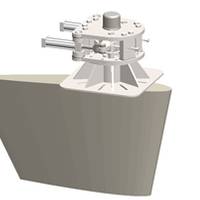
WESMAR (Western Marine Electronics) will introduce a 50-square-foot mega fin at the Fort Lauderdale Boat Show on October 27-31 in Florida. Designed for luxury yachts, charter and super yachts, these new fins, coupled with WESMAR’s triple axis digital DSP4800 control electronics, are designed to reduce up to 90% of vessel roll. They are rugged with a neutrally buoyant design that adds lift, and are designed with added strength and reliability to meet the high performance requirements of vessels up to 250+ feet.
Bureau Veritas Issues Guidance For Risk-Based Qualification Of New Technology

LEADING international classification society Bureau Veritas has issued guidelines for the Risk-Based Qualification of New Technology. Qualification is a process by which a new technology or an existing technology used in a new context is validated. The qualification process is intended to prove with an acceptable level of confidence and in a cost effective manner that a technology is fit for purpose, that it complies with the specifications that the designer developed and that it is sufficiently reliable and is safe for the people and the environment.
MMS Requests 2005 Research Proposals
MMS may award a total of between $500,000 to $900,000 towards new operational safety and engineering (OSER) research proposals for 2005. As part of the agency’s responsibilities to regulate the offshore oil and gas industry, the Technology Assessment and Research Program (TA&R) funds research into operational safety, pollution prevention, and oil spill response and cleanup capabilities. The TA&R Program operates through contracts with universities, private firms, and government laboratories to assess safety-related technologies and to perform necessary applied research. New challenges and informational needs arise as technology changes or as operations expand into new or different environments such as the deep water areas of the Gulf of Mexico (GOM).









